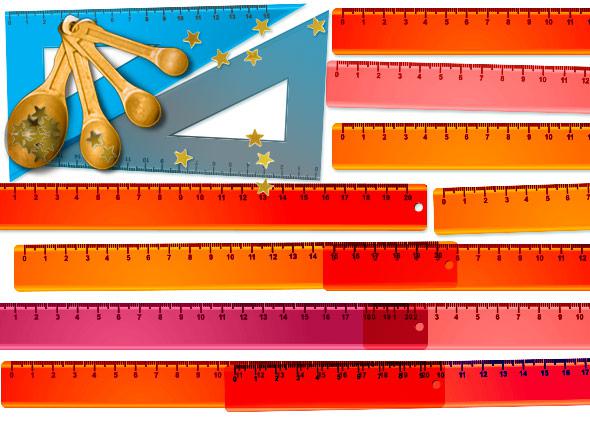On Sept. 23, the $123 million Mars Climate Orbiter was lost when it veered off course and burned up in the Martian atmosphere. Last week, NASA revealed the cause: One part of the orbiter’s navigation system was speaking in English units and another in metric. Why hasn’t the U.S. adopted the metric system?
The metric system originated in France in the late 17th century to combat rampant commercial fraud by farmers and shopkeepers who used the varied systems of weights and measures to their advantage. Scientists were also demanding a standardized system to facilitate international cooperation on research. While old systems seemed arbitrary, the new standardized system had an apparent basis in nature: The meter was defined as 1/10,000,000 of the distance between the equator and either pole (it has since been redefined in terms of the speed of light). It was also easier to remember than other systems because it was based on the decimal system.
France officially adopted the metric system in the early 1800s, and the rest of the continent quickly followed in hopes that a standardized measurement system would spur international trade. Over the next hundred years, the metric system spread globally. The British Commonwealth resisted abandoning their traditional measures, but in the early 1970s–under the slogan “Metric: 10 times better”–they, too, metricated. (Some road signs and body weights, however, remain “customary.”) Today, the U.S. is one of only three countries–along with Myanmar and Liberia–where the metric system is not commonly used.
Officially, at least, the U.S. has gone metric. The yard, the pound, and the gallon–prototypes of which were once held in London–are now officially defined by reference to metric units. In 1975, the federal government adopted metric as the nation’s “preferred measurement system” and established the United States Metric Board to manage the transition. The changeover was ineffective, however, and by the early 1980s, the only tangible progress was that liquor and wine had to be labeled in liters. Metrication was revived in 1988, when Congress required that all government agencies be metric by 1992 to the extent “feasible.” Today, agencies with large international or scientific operations–like the Department of Defense and NASA–are almost fully converted; others–like the Department of Education–have done little, citing the rights of states to decide such matters. America’s private sector is similarly mixed: Large corporations with overseas exports are at least partly converted, but most small businesses still use the English system.
American metric advocates encountered stiff opposition in the ‘70s and ‘80s. Labor unions worried that workers would be unable to learn a new system. Businesses protested that redesigning machines and products to metric standards would be costly. States objected to the expense of replacing road signs and revising laws. And average citizens argued that change was unnecessary and said the metric system–with its multiples of 10, instead of the more intuitive halves and quarters of English measures–was not compatible with human experience. In contrast, there was no natural constituency for the pro-metric cause.
But similar obstacles were encountered–and overcome–in other countries. So, some metric advocates attribute America’s non-conversion to national character. American individualism, they say, makes us more resistant to government-mandated change than other cultures. For example, Mother Jones reported that the National Cowboy Hall of Fame sued to block metrication, claiming “the West was won by the inch, foot, yard, and mile.” Metric supporters also see xenophobia in Americans’ distaste for a foreign system of measurement. In the 1970s, some opponents suggested that metric road signs would facilitate a Russian invasion.
Others ascribe American inaction to logistical obstacles. It is a classic instance of path dependency: Once a course is chosen, it is difficult to induce people to switch. And until the 1990s, the U.S. had little incentive to do so, since the economy was sufficiently dominant in its trade relationships to enforce English units on its partners. (This may soon change, as the European Union plans to ban products labeled in English units at the end of the year.) Also, unlike other nations, the United States’ metrication legislation has been entirely voluntary, so few organizations have transitioned. The Department of Commerce’s Metric Program–which took up the cause when the Metric Board was abolished in 1982–now focuses on outreach to the business community, instead of legislation. The year’s marquee event, “Metric Week,” begins this Sunday–the 10th day of the 10th month.
(Mother Jones recounts the struggles of ” the least powerful men in Washington,” the staff of the Department of Commerce’s Metric Program. Also see the Web page of the U.S. Metric Association for exhaustive information on metrication.)
